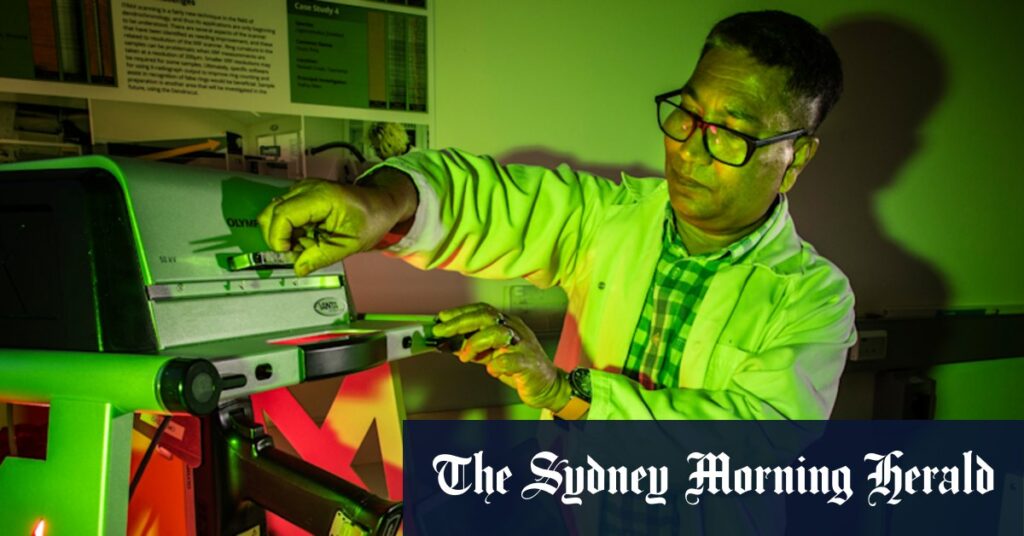
If you are a seafood enthusiast, there is an unsettling possibility that you have unknowingly consumed critically endangered shark meat or served a holiday platter labeled as “Aussie caught” prawns and fish that, in reality, originated from an Asian trawler. A 2023 DNA analysis disclosed that more than one in ten seafood products were mislabeled, revealing that endangered hammerhead shark flesh was being sold as fish-and-chip shop flake. Fillets of spotback skate, a native ray species at risk of extinction, were found on supermarket shelves.
This alarming trend of “fish fraud” has prompted a team of nuclear scientists to develop a handheld detector, resembling a radar gun, capable of identifying the origin of a food product within minutes. Dr. Debashish Mazumder, leader of food provenance research at the Australian Nuclear Science and Technology Organisation (ANSTO), explained,
“If you look at the food safety angle, if we do not know a food’s source of origin, it may be contaminated with something. There are biosecurity issues also there.”
He emphasized that the issue affects not only the industry but society and the environment as a whole.
Genesis of the Handheld Scanner
Dr. Mazumder’s interest in food fraud began nearly a decade ago when he purchased two types of chicken meat from a major supermarket for an experiment. Despite one being labeled as free-range and the other as corn-fed, his analysis revealed suspiciously similar isotopic signatures, suggesting the corn-fed chicken was not as advertised. This discovery led Mazumder and his team to repurpose a handheld scanner, initially used for sediment analysis, to trace food products to their origins.
The device operates on the principle that animals and plants possess a unique elemental makeup specific to their habitat. For instance, a fish swimming off the Northern Territory coast may contain minute traces of uranium atoms compared to a similar species caught off Sydney, due to the region’s history of uranium mining. The scanner utilizes X-ray fluorescence (XRF) technology, emitting three beams through a fish sample to reveal its elemental composition.
Building a Comprehensive Database
In collaboration with fisheries and researchers across Australia and Southeast Asia, Mazumder’s team has developed a database of “elemental signatures” linked to specific locations. This allows the device to determine the origin of a fish fillet and ascertain whether it was farmed or wild-caught, with over 80% accuracy.
During a demonstration, the ANSTO team analyzed two seemingly identical bream: one from the Clarence River in Yamba and the other from the Hunter River near Newcastle. While DNA analysis would classify them as the same species, the XRF analysis revealed differing levels of calcium, phosphorus, and chlorine. Notably, the Yamba bream contained traces of the rare-earth metal neodymium, absent in the Newcastle fish. With these elemental fingerprints cataloged, future products can be traced back to their respective rivers.
Uncovering Seafood and Other Food Frauds
Early trials of the scanning technique have already exposed “Australian” tiger prawns sold in Sydney as actually originating from Malaysia. The device has also identified fraudulent sales of Kakadu plum, undermining authentic Aboriginal producers in the Northern Territory and Western Australia. Nearly 90% of overseas products marketed as Kakadu plum were found to be counterfeit. In one case, a product sold online as authentic Kakadu plum powder was revealed to be corn flour.
The US Food & Drug Administration estimates that food fraud costs the global economy up to
US$40 billion annually
. The ANSTO team has prioritized seafood due to its prevalent mislabeling and complex supply chain. As global fish stocks decline, accurately identifying the origins of seafood products is crucial for sustainability.
Implications and Future Directions
This innovative technology could revolutionize the seafood industry by enhancing transparency and accountability. By providing a reliable method for verifying the origin of seafood, it supports efforts to combat illegal fishing and protect endangered species. The implications extend beyond seafood, offering potential applications in other food sectors plagued by fraud.
As the ANSTO team continues to refine their scanner and expand their database, the technology may soon become a standard tool for regulators and consumers alike. This advancement represents a significant step forward in ensuring the integrity of our food supply and safeguarding the environment.







